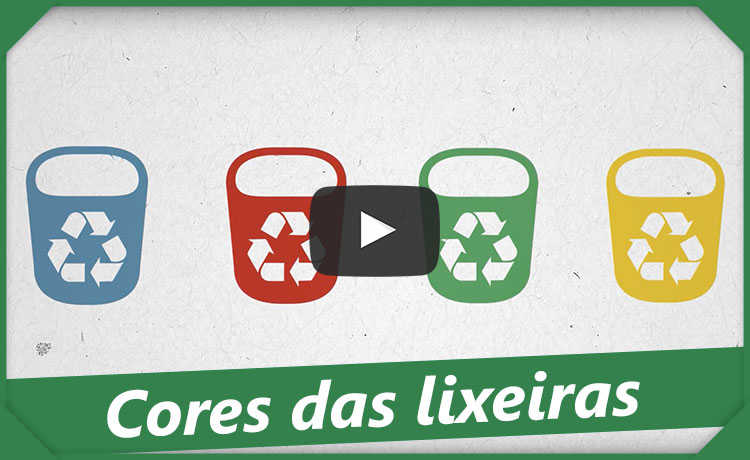Cigarette butt: a great environmental villain
The cigarette butt is not biodegradable! Think carefully before throwing it away incorrectly

Just walk through the streets of any Brazilian city to see a cigarette butt in every corner. Many smokers still throw their butts anywhere after the cigarette ends, forgetting or not knowing the environmental risk that this incorrect disposal represents. According to the World Health Organization (WHO), the estimated number of smokers in the world is 1.6 billion. This enormity of people throws away, according to information from the Authority for Working Conditions (ACT), 7.7 cigarette butts a day. That is, there are about 12.3 billion butts discarded daily. According to an NBC News report, cigarette butts pollute the ocean more than plastic bags and straws.
- Cigarette Butt Disposal Solutions
The concern about numbers is great because one of the "sports" most practiced by smokers is the "butt-throwing", which has become familiar in the streets of many cities around the world, bringing the terrible inconvenience of small mountains of cigarette butts in front of bars and other places of great circulation, which harms the city and the environment. In the State of São Paulo, the 2009 anti-smoking law has aggravated this problem even further, as smoking is not allowed indoors - and many establishments do not provide appropriate ashtrays or trash cans for collecting butts. In Paraná, on the other hand, laws were created to fine anyone caught throwing butts on the ground and to install butt collectors at strategic points.
And in relation to other types of garbage, cigarette butts seem to be harmless when thrown on the streets and avenues. The damage that this small object causes, however, is much greater than most people realize.
To give you an idea, the decomposition time of an incorrectly discarded cigarette butt can reach up to five years, especially if it is thrown on asphalt. Not to mention the fact that it contains more than 4.7 thousand toxic substances, which damage the soil, contaminate rivers and streams. This relative delay in decomposition is due to the fact that 95% of cigarette filters are composed of cellulose acetate, which is difficult to degrade.
According to information from the Portal of the Government of the State of São Paulo, between the dry seasons, the cigarette butt is one of the main causes of fires. These fires, caused by the contact of the butt with the vegetation, cause environmental damage and also reduce safety in places close to the lanes, due to the smoke that impedes better visibility for drivers.
The problem is not just the butt

Unsplash image of Sara Kurfeß
All this without mentioning the harm to health that cigarettes do. With more than 4,700 chemical substances considered toxic present in its smoke, smoking aggravates respiratory diseases, increases the risk of lung cancer and reduces the desire to exercise.
According to a study by Inca, smoking represents 45% of deaths from myocardial infarction, 85% of deaths from chronic obstructive pulmonary disease (emphysema), 25% of deaths from cerebrovascular disease (stroke) and 30% of deaths from cancer, being responsible for causing nearly 50 different disabling and fatal diseases and responsible for killing 5 million people a year.
Furthermore, the same study shows that 90% of lung cancer cases occur in smokers and triggers and worsens conditions such as hypertension and diabetes.
According to the website of the Ministry of Health, 23 people die every hour as a result of diseases related to smoking and, according to an estimate by the World Health Organization (WHO), the victims of tobacco use reach five million a year. Tobacco cultivation also promotes deforestation, since to dry tobacco leaves it is necessary to use wood-burning ovens. And, of course, there is the chemical dependency that cigarettes cause, being considered one of the most difficult addictions to be abandoned, and public spending on health due to diseases related to smoking.
Furthermore, smoking is also harmful to non-smokers and tobacco harvesting workers. Passive smokers have a 30% higher risk of developing lung cancer, 25% higher risk of developing cardiovascular disease in addition to asthma, pneumonia, sinusitis, among others. The 3rd cause of preventable death in the world is passive smoking. Not to mention the damage caused by the intoxication caused by tobacco harvesting to farmers, including - according to some researchers - an increase in suicide, especially in southern Brazil.
A study funded by the Tobacco Control Alliance (ACT) showed that the cost of tobacco for the Brazilian health system is R$21 billion a year, while the entire tax collection from this industry is around R$6 billion.
Therefore, the option to quit smoking is the one that solves the problems the most. The person who doesn't generate any cigarette butts obviously doesn't throw them on the floor. But for those who have difficulty stopping, make an effort to at least throw the butt in the trash. Hold your cigarette butt until you find a trash can or "butt box". Another option is to erase the butt and put it back in the cigarette pack until you find a trash can. This will influence others to do the same, reduce road pollution and water contamination.
Recycling
Butt recycling is possible and some companies offer butt holders and a butt collection and sorting station in Brazil. In addition, there are different processes for removing chemical elements from butts to transform them into raw material for the steel, cement, plastic, paper, fertilizer and even natural fiber industries.
A survey conducted at Unicamp concluded that some methods can be effective for recycling butts. The application of butts as a corrosion inhibitor for N80a steel in the steel industry, for example, has an efficiency of 94.6% in the inhibition of steel corrosion, when treated in a solution with a concentration of 10% hydrochloric acid, being The amount of about 3800 butts is required daily.
The butt can also be made into plastic after being initially treated with gamma rays to remove its toxic components. After this process, the ashes are sterilized and dissected, mixing paper and tobacco, while cellulose acetate, a plastic material used in the filter, is melted and recycled. This method has already recovered more than a million cigarettes in a short time in Europe and the United States. Furthermore, it is one of the most expanding programs in the world.










